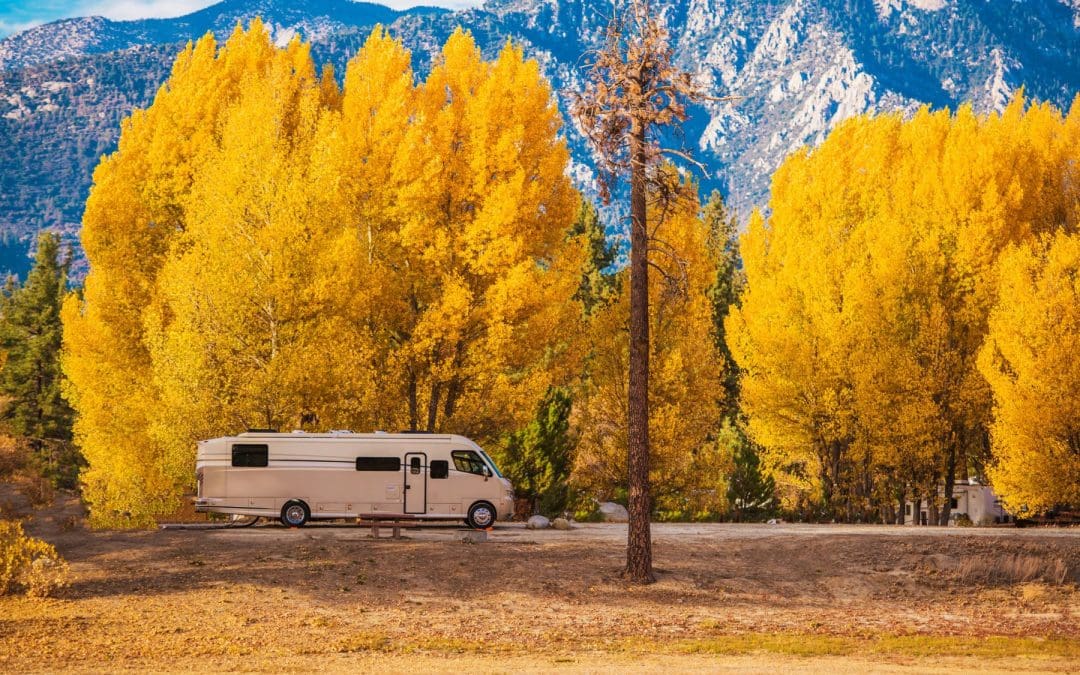As the scorching days of summer fade into crisp, cool evenings, a new season of RV adventure beckons: fall. Fewer crowds, comfortable temperatures, and stunning natural beauty make autumn an ideal time to hit the road. But successful fall RVing requires a bit of preparation to ensure you stay warm, safe, and fully enjoy the splendor of the season.
RVing in the Fall: Preparing for Cooler Weather
Transitioning your RV from summer mode to fall readiness involves a few key steps, primarily focused on climate control and preventing potential cold-weather issues.
Inspect Your RV Systems
Before those temperatures really drop, give your RV’s furnace a thorough check. Turn it on and listen for any unusual noises. Ensure the vents are clear of obstructions and that hot air is flowing freely. If you notice any issues, address them proactively. A professional inspection by an RV technician is a wise investment if you’re unsure or encounter problems. Don’t forget to check your propane levels – you’ll be using more of it for heating. Consider carrying a spare tank or planning your stops around propane refill stations.
Protect Your Water System
While full winterization might still be a few weeks or months away for many, protecting your water system from freezing is crucial as overnight temperatures begin to dip. Always disconnect your fresh water hose from the campground spigot when you leave your site or if temperatures are expected to drop below freezing overnight. Consider using a heated water hose if you plan to stay in areas with consistent freezing temperatures. If you’re boondocking or dry camping, ensure your water tank and lines are protected, and if temperatures are consistently below freezing, you may need to consider partial winterization of vulnerable lines.
Check Tires and Brakes
Fall weather can be unpredictable, bringing rain, sleet, or even early snow in some regions. Ensure your RV tires are properly inflated and have adequate tread depth for varying road conditions. Inspect your brakes for any signs of wear and tear. Good traction and reliable braking are paramount for safe travel, especially on wet or slippery roads.
Lighting and Visibility
Shorter daylight hours mean you’ll be driving more in dusk and darkness. Test all exterior lights – headlights, taillights, turn signals, and marker lights – to ensure they are fully functional. Clean them regularly for maximum visibility. Consider carrying spare bulbs and fuses.
Embracing the Fall Experience
With your RV prepared, it’s time to fully immerse yourself in the autumn adventure. Research the best areas for fall foliage viewing in your desired region. Online resources, state tourism websites, and even social media groups dedicated to RVing can provide excellent recommendations. Consider scenic byways and national parks, which often offer breathtaking displays. Keep an eye on peak foliage times, as these can vary year to year and by elevation.
Fall offers a plethora of unique activities. Visit local apple orchards, pumpkin patches, or corn mazes. Attend harvest festivals and craft fairs. Hike through vibrant forests, go fishing in cooler waters, or simply relax by a campfire with a warm beverage, taking in the serene atmosphere. Many campgrounds host special fall events, so check their schedules.
Autumn is a busy time for wildlife as animals prepare for winter. Be extra vigilant on roads, especially at dawn and dusk, when animals are most active. Store food properly to avoid attracting unwanted critters to your campsite.
FAQs About Fall RVing
Do I need to winterize my RV for fall camping?
Not necessarily full winterization, unless you’re camping in consistently sub-freezing temperatures for extended periods. However, protecting your water lines from overnight freezes is crucial. Disconnecting your water hose, using a heated hose, and potentially draining lines if temperatures plummet are good practices.
Will campgrounds be less crowded in the fall?
Generally, yes! After Labor Day, many campgrounds experience a noticeable decrease in visitors, particularly on weekdays. This results in a quieter environment, easier reservation availability, and a more relaxed atmosphere. However, popular destinations for fall foliage may still attract crowds, so it is advisable to plan ahead for those locations.
What kind of food should I pack for fall RVing?
Think comfort food! Hearty stews, chilis, hot soups, and warm beverages are perfect for cooler evenings. Don’t forget ingredients for s’mores around a campfire. Local farmers’ markets are great for fresh, seasonal produce like apples, squash, and pumpkins.
Are there any specific safety concerns for fall RVing?
Beyond general RV safety, be mindful of changing weather conditions (rain, fog, early snow), shorter daylight hours affecting visibility, and increased wildlife activity. Always have a plan for unexpected cold snaps and ensure your heating system is reliable.
Can I still use my RV’s air conditioner in the fall?
Absolutely! While days are generally cooler, there can still be warm spells, especially in early fall. Your air conditioner will still come in handy to keep your RV comfortable during those warmer afternoons.
Blue Ribbon RV Inspection offers RV inspections throughout Arizona. Contact us to schedule an appointment today.

